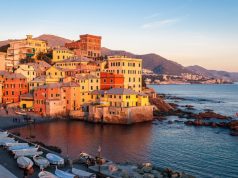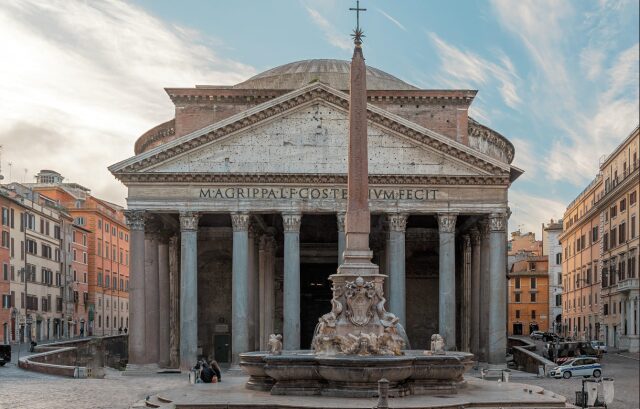
When it comes to the historic landmarks that define Rome, the Pantheon certainly tops the list. Not only does this architectural marvel boast a lineage that dates back to ancient Roman times, but it also stands as a paragon of engineering and design that has stood the test of time.
A visit to the Pantheon is more than just a step back into history; it’s a foray into a grand era of architectural ingenuity. Here’s what you need to know about visiting this iconic structure.
A Brief History
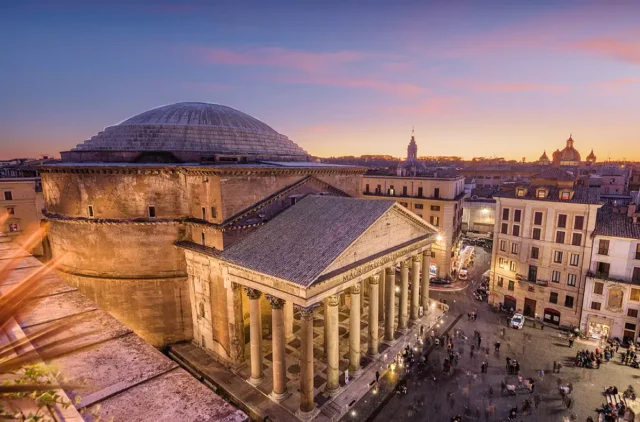
Originally built in 27 B.C.E by Marcus Agrippa, the Pantheon has been rebuilt twice, with the current structure dating back to 125 A.D., constructed under Emperor Hadrian. Its name, “Pantheon,” is derived from the Greek words ‘Pan’ and ‘Theos’, which translates to “All Gods,” underscoring its initial purpose as a temple dedicated to all Roman gods.
Over the years, the building has been repurposed several times, including its conversion into a Christian church in the 7th century, but its core architectural elements have remained largely unchanged.
The Architecture
The most striking feature of the Pantheon is its immense dome, the largest unsupported concrete dome in the world even to this day. At its apex is an opening known as the “oculus,” a 30-foot hole that serves as the structure’s only source of natural light. The fascinating part?
Despite being nearly two millennia old, the Pantheon’s dome has never collapsed, a testament to the superior engineering skills of the ancient Romans. The concrete used in construction varies in density, with heavier materials at the base and lighter ones towards the top, a strategic decision that has contributed to its longevity.
Getting There
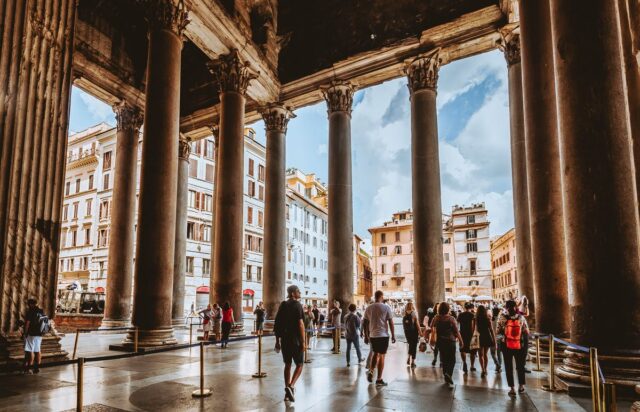
The Pantheon is located in the heart of Rome, nestled within the bustling streets of the city’s historic center. It’s within walking distance from other major attractions like the Trevi Fountain and Piazza Navona, making it a convenient stop on any Rome itinerary.
Public transportation options are also available; the nearest metro station is Barberini, and from there, it’s about a 10-minute walk to the Pantheon.
What to Expect
Entry to the Pantheon is free, although donations are encouraged. Upon entering, your eyes will immediately be drawn to the oculus, and you’ll feel a sense of awe as you observe the beam of sunlight it allows in, casting a mesmerizing glow over the interior.
The interior layout is based on a perfect sphere, illustrating the Romans’ fascination with geometric shapes and harmony. You’ll also find tombs of renowned Italians like the artist Raphael, further contributing to its historical significance.
When to Visit
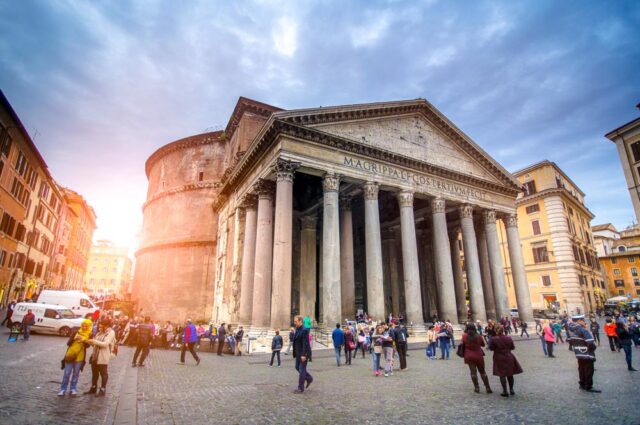
The Pantheon is open year-round, but the best time to visit is either early in the morning or late in the afternoon to avoid crowds. During peak tourist season, the place can get quite packed, diluting the experience somewhat.
Rainy days offer a unique spectacle: the rain filtering through the oculus, evaporating before it hits the ground, thanks to the cleverly designed floor.
Nearby Attractions
After your visit, take some time to enjoy the Piazza della Rotonda just outside the Pantheon. This square is replete with cafes, street performers, and a delightful atmosphere perfect for soaking up some Roman culture. A short walk will also lead you to other must-see sites like the Roman Forum and Colosseum.
Buying Tickets for The Pantheon Rome
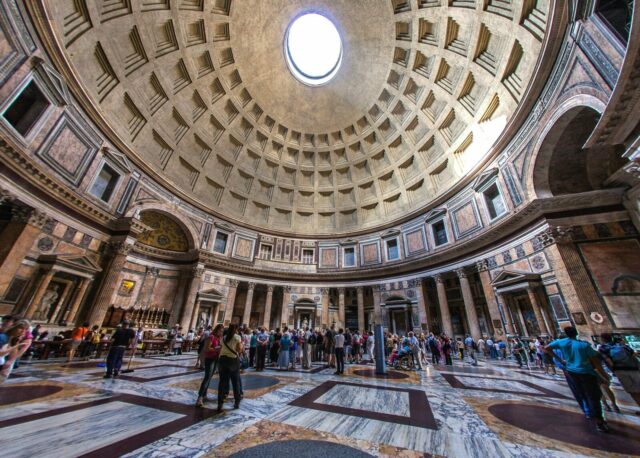
Visiting the Pantheon is like stepping into a time machine that transports you back to ancient Rome. With its historic significance, groundbreaking architecture, and captivating spiritual aura, it offers a multi-layered experience that appeals to history buffs, architecture enthusiasts, and casual tourists alike.
The Pantheon not only embodies Rome’s rich past but also symbolizes the eternal spirit of this incredible city. So, when in Rome, make sure you don’t miss out on this unparalleled marvel of architecture and history. The Rome Pantheon ticket prices start at €15, which includes entry to the Pantheon and a complimentary audio guide, more information at pantheon-tickets.com.
Don’t forget to bring a camera; you’ll want to remember this experience for years to come.
Other Things to Do Near the Pantheon Rome
The Pantheon, with its iconic dome and ancient Roman engineering, stands as one of the most visited landmarks in Rome. Yet, the cobblestone streets surrounding this magnificent structure brim with other captivating sights and experiences often overshadowed by its grandeur.
Let’s journey beyond the Pantheon and discover the lesser-known gems that are equally deserving of your attention.
1. Piazza Della Rotonda
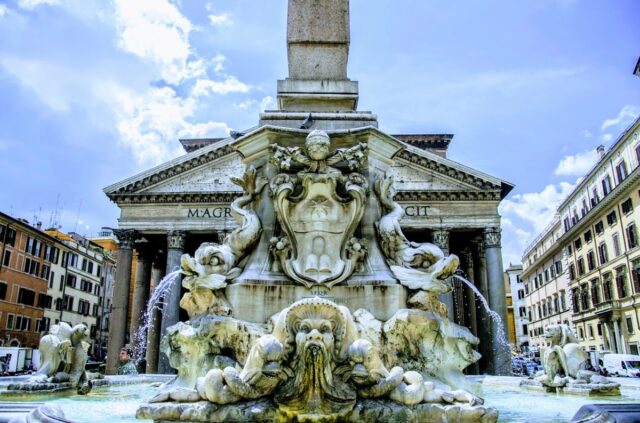
Just in front of the Pantheon, this lively square is a delightful place to start. The central fountain, adorned with an obelisk, is not only picturesque but is also one of the oldest fountains in Rome. The piazza is encircled by cafes and restaurants, making it an ideal spot to sip an espresso and soak in the Roman atmosphere.
2. Basilica of Santa Maria Sopra Minerva
A short stroll from the Pantheon, this Gothic church is a contrast to Rome’s predominant Baroque style. Notable for its blue ceiling dotted with gold stars, it’s also the final resting place of the renowned Saint Catherine of Siena. Art aficionados can admire works from Michelangelo and Filippino Lippi inside.
3. Gelateria Della Palma

Rome is synonymous with delicious gelato, and Della Palma offers an astonishing variety with over 150 flavors! Located a stone’s throw from the Pantheon, it’s a must-visit for a refreshing treat on a warm day.
4. Teatro Argentina
Not only is this one of Rome’s oldest theaters, but it’s also historically significant as the site where Julius Caesar was assassinated in 44 BC. While it primarily stages operas and plays today, the ruins nearby are free to visit.
5. Crypt of The Capuchin Friars (Santa Maria Della Concezione)
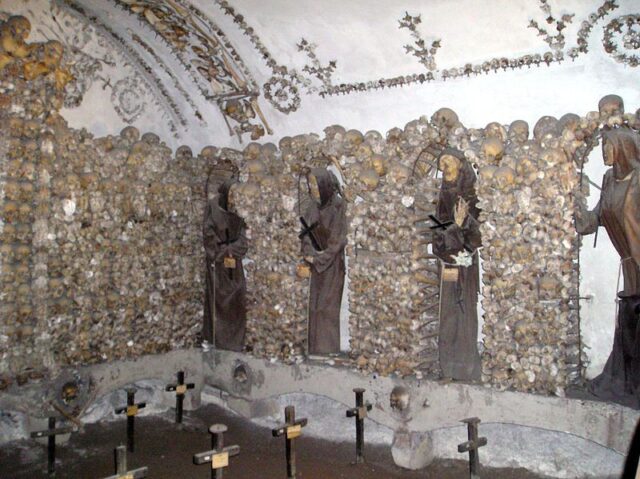
A slightly macabre yet profoundly unique experience awaits at the Capuchin Crypt. Here, the bones of 4,000 friars have been artistically arranged, serving as a memento mori and a contemplative space about life and death.
6. San Luigi dei Francesi
Another magnificent church in the vicinity, San Luigi is famous for housing three of Caravaggio’s masterpieces. The stunning paintings, depicting scenes from the life of Saint Matthew, are a treat for art and history enthusiasts alike.
7. Largo di Torre Argentina
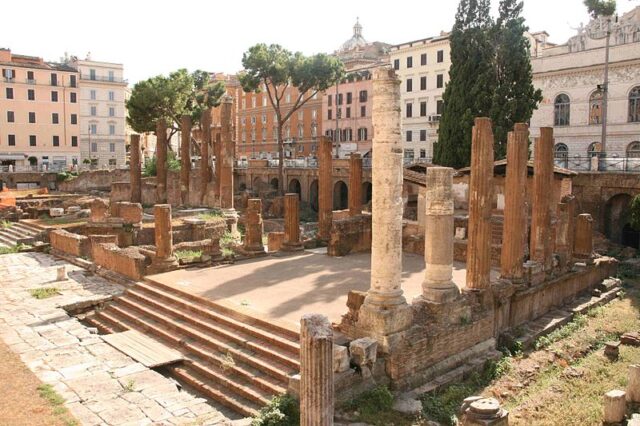
A sanctuary for cat lovers! This collection of ancient ruins, believed to include the remains of Pompey’s Theatre, is now a haven for Rome’s stray cats. Local volunteers care for these feline residents, and visitors can even adopt a cat as a lifelong souvenir.
8. Museo Altemps
Situated in a grand Renaissance mansion, this museum showcases an impressive collection of classical sculptures. The exhibits, stemming from several prominent Roman families, offer a fascinating insight into the art and culture of ancient Rome.
9. Tazza D’Oro
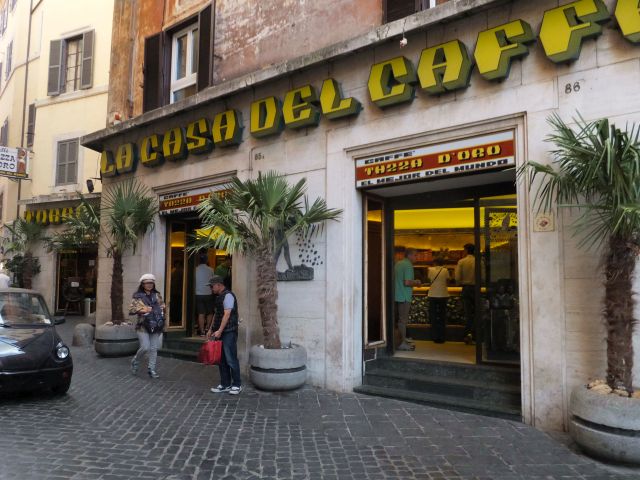
Hailed as one of the best coffee spots in Rome, Tazza D’Oro is a stone’s throw from the Pantheon. Their granita di caffè, a semi-frozen dessert made from sugar, water, and coffee, is especially recommended. Experience authentic Roman coffee culture in this bustling establishment.
10. Piazza Navona
Although one of the more popular sites in Rome, Piazza Navona’s beauty and significance can’t be understated. With its three magnificent fountains and the Baroque church of Sant’Agnese in Agone, it’s a hub of art, history, and Roman daily life. This oblong piazza, shaped as a stadium, was once the site of ancient Roman games.
11. Campo de’ Fiori
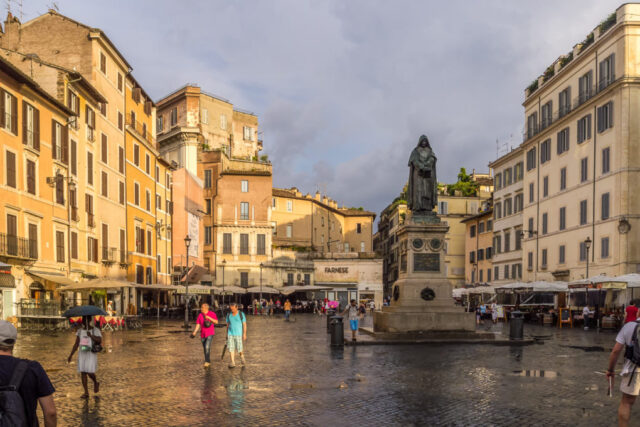
During the day, Campo de’ Fiori is a bustling market square, offering fresh produce, spices, and souvenirs. By night, it transforms into a lively hub filled with restaurants, bars, and street performers. Don’t forget to pay respects to the statue of philosopher Giordano Bruno, who was executed in the square.
12. Via del Corso
Shopaholics, rejoice! Via del Corso, stretching about 1.5 kilometers, is one of Rome’s primary shopping streets. From high-end brands to quaint boutiques, there’s something for every shopper’s delight.
Conclusion
The allure of the Pantheon is undeniable, but the labyrinthine streets of Rome that radiate outwards from this architectural marvel contain a myriad of treasures waiting to be explored.
Whether you’re a history buff, an art lover, or simply a curious traveler, there’s no shortage of enchanting experiences awaiting you near Rome’s glorious Pantheon. Dive deep, wander without a strict plan, and let the Eternal City surprise you at every corner.


